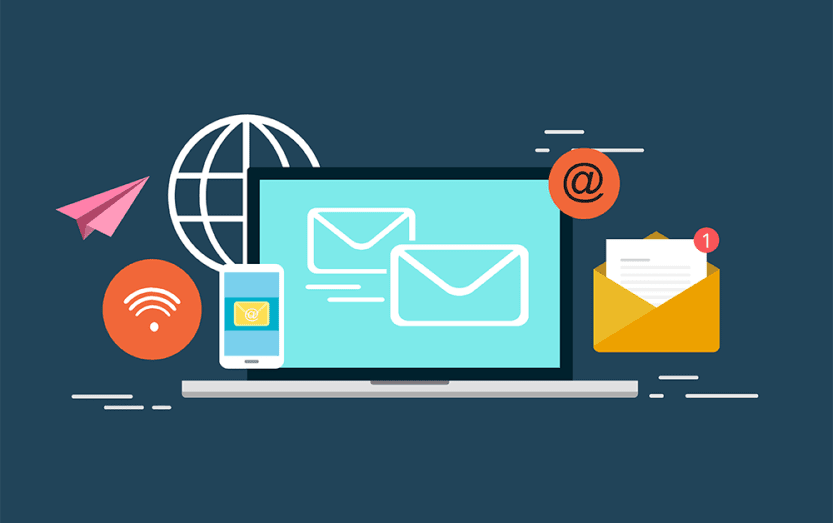Email correspondence and email marketing are essential components of growing your business. And the way your business communicates goes a long way towards making a good impression — or a bad one. Just like with an in-person customer interaction, it’s important to put your best foot forward whenever you send an email.
Making a good impression with email doesn’t have to be complicated, and it can help your business come across as professional and trustworthy.
Take a look at these nine small business email etiquette tips that can help keep your email friendly, polite and polished.
1) Don’t use your personal email address
While you want your customer emails to feel personal, using your personal email address may not be the right way to go. There are plenty of reasons to creating an email address specifically for your business:
- It looks more professional — JohnDoePlumbing@gmail.com (or better yet, support@johndoeplumbing) makes a better impression than JManLovesCats13@gmail.com
- It helps you separate your personal and business messages — It can be easy to miss an important message from a customer if it’s mixed in with your personal emails
- It makes it easier for employees to assist with email — You’ll feel more comfortable giving co-workers access to the company inbox than your personal email address
2) Always use a subject line and friendly, professional greeting
First impressions are everything. If you’re sending the first email rather than replying, you need to make sure you’re including a great subject line that will catch your customer’s eye. Personalizing the subject line by including their first name has been proven to generate up to 50% higher open rates, according to a 2019 report by Yes Lifecycle Marketing.
Start your email off by greeting them in a friendly way that you would expect if you were in their shoes — a simple “Hi,” “Hello,” or “Good morning/afternoon,” along with their name will do the trick.
- Are you emailing someone you haven’t spoken to before? Consider using their first and last name.
- Are you emailing a long-time customer? Use their first name or even a nickname (if you usually call them by a nickname)
3) Make sure you reply promptly
Promptly responding to an email shows that you respect your customer’s time and energy, and that they can depend on you to provide information if they need it. Responding within 24 hours or less is a great place to start.
Don’t have an immediate answer to a customer’s question or concern? Reply anyway to say that your team is working on it. People appreciate being kept in the loop!
[Related: Five Things You Need To Know About Launching Your Business Online]
4) Avoid spam
Don’t shoot off dozens of emails to your recipients all at once, and don’t send out emails to random addresses. This type of behavior will quickly land you in the “Spam” folder — and once you’re there, it’s tough to get out.
The number one reason people unsubscribe from a company’s promotional emails is because they’re receiving too many. Check out how often your competition sends their emails (you can always subscribe to their mailing lists to find out), and give people on your email list an option of how many promotional or marketing emails they’d like to receive per month.
Your emails should contain quality content and be targeted toward existing or potential customers — always giving people the option to unsubscribe.
5) Always check things over before hitting “Send
Whether it’s a typo… forgetting a key point you want to communicate… or saying something in the moment that you probably didn’t mean to say… there’s nothing worse than sending an email you immediately regret.
As a small business owner, you may think that you don’t have time to proofread your emails before sending them out. But trust me, you do. You can also change the settings in Gmail or add certain plug-ins so that your messages are sent on a delay, just in case you want to recall a message for further editing.
[Related: Six Free Online Tools for Small Businesses]
6) Don’t use “URGENT” too often
Unless something is truly a high priority, take it easy on flagging your emails. If you use this feature too much, it will have the opposite effect you’re hoping for — and your message could end up being ignored altogether.
7) Keep it brief
Small business owners often have tight schedules, and your customers probably do as well. People get tons of emails everyday, and not everyone can hang around their inbox day and night. Just like you wouldn’t want someone to take up all of your free time with what seems like pages and pages of information, don’t allow this to happen when you’re emailing someone else.
Keep your emails as short and to the point as possible. A good rule of thumb is to use no more than four sentences in a paragraph, and try to keep the number of paragraphs you write to three or less. If you need to exchange a lot more information, it might make more sense to set up an in-person or virtual meeting so you can chat in real time.
8) Keep it simple
As tempting as it may be to use bold fonts and colors to make your emails stand out, it’s best to stick with the basics for your messages to come across clearly. A friendly “voice,” helpful demeanor, and quality content should be enough to make a great impression in your emails.
9) Leave a signature
A business is only as good as its people, and email is a great way to present yourself to your customers. Email is a personal communication (even when it comes from a business email address), so end your emails with:
- Your name
- Your position or title
- How to get in touch with you (like a phone number or address)
And finally, your website address and social media handles!
To represent your business well, proper email etiquette is a must, no matter who your audience is. Using these tips will help make sure you’re seen as someone your customers can trust.



